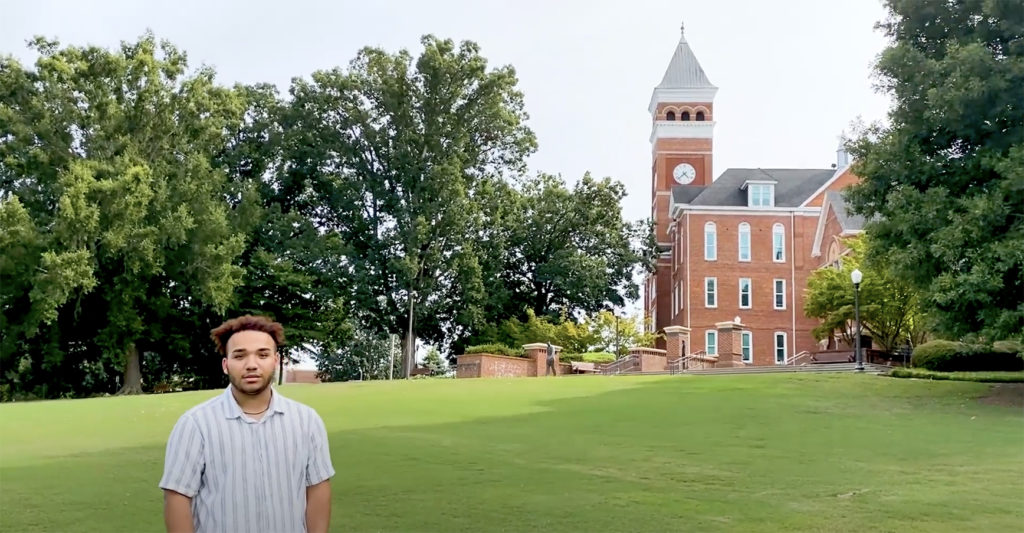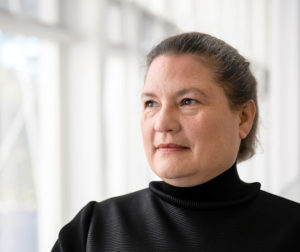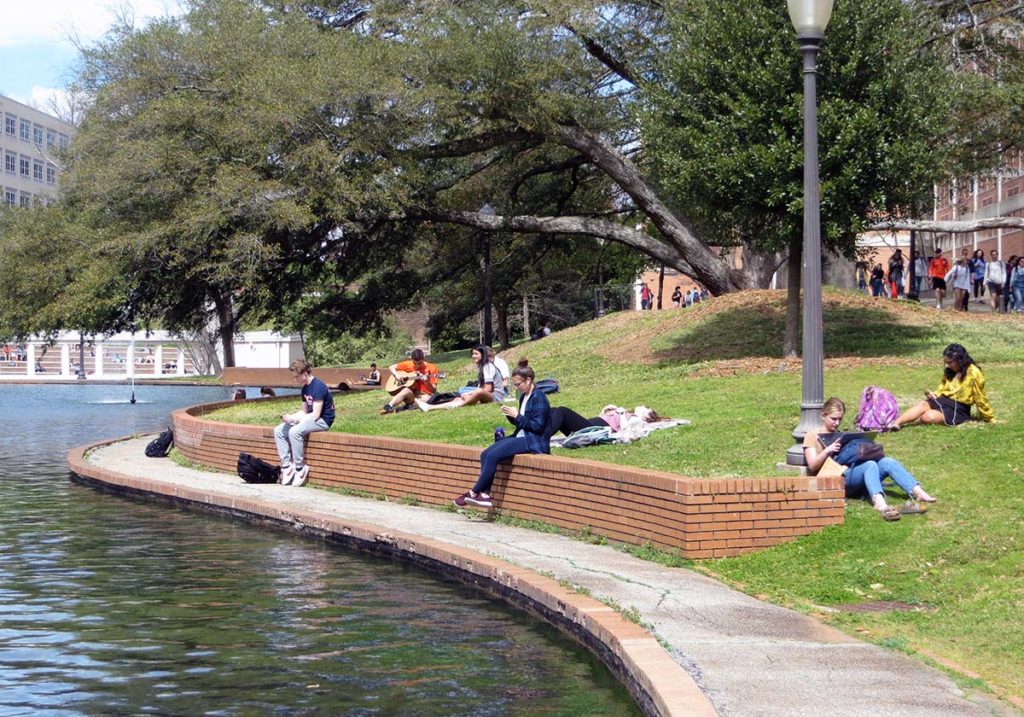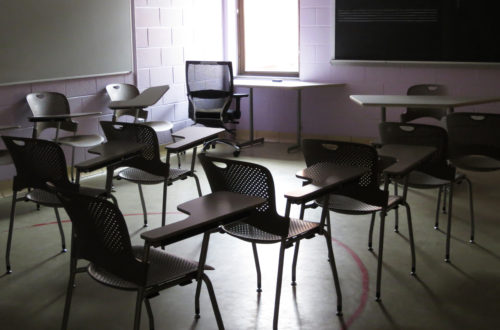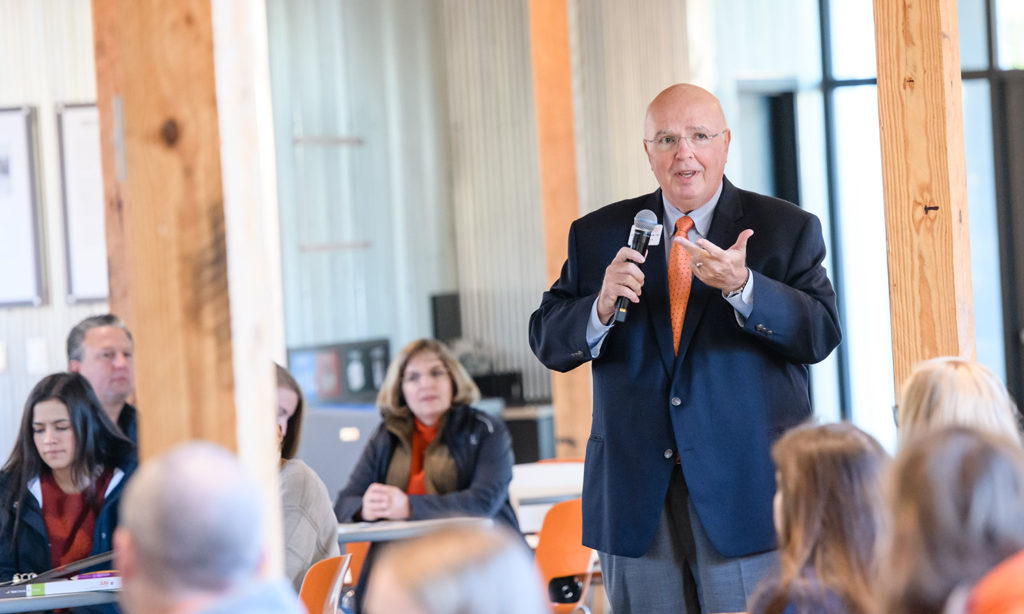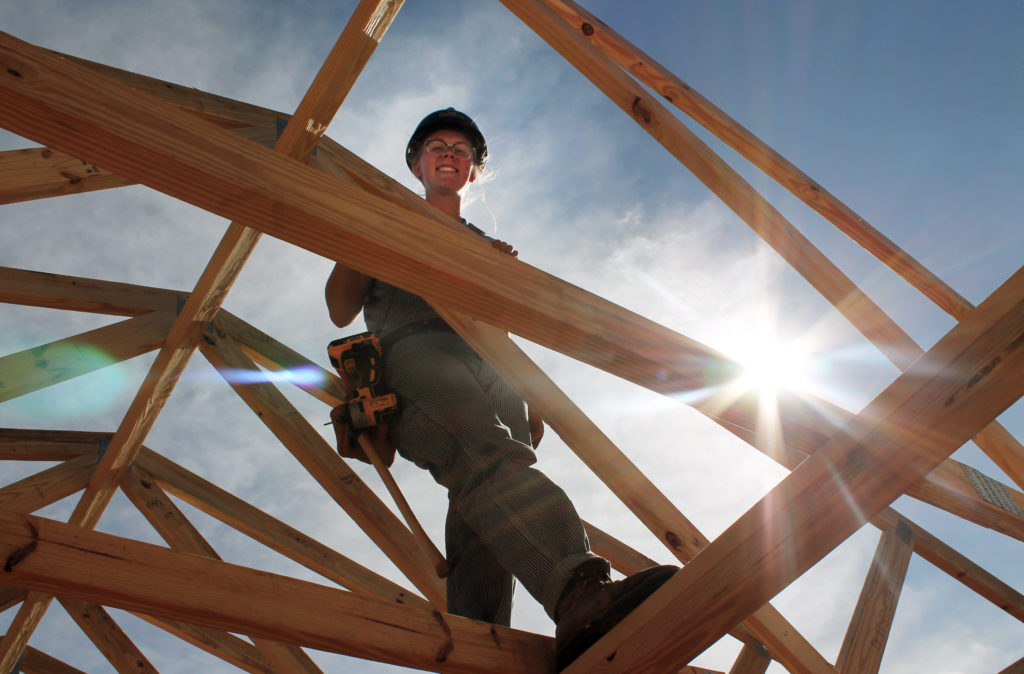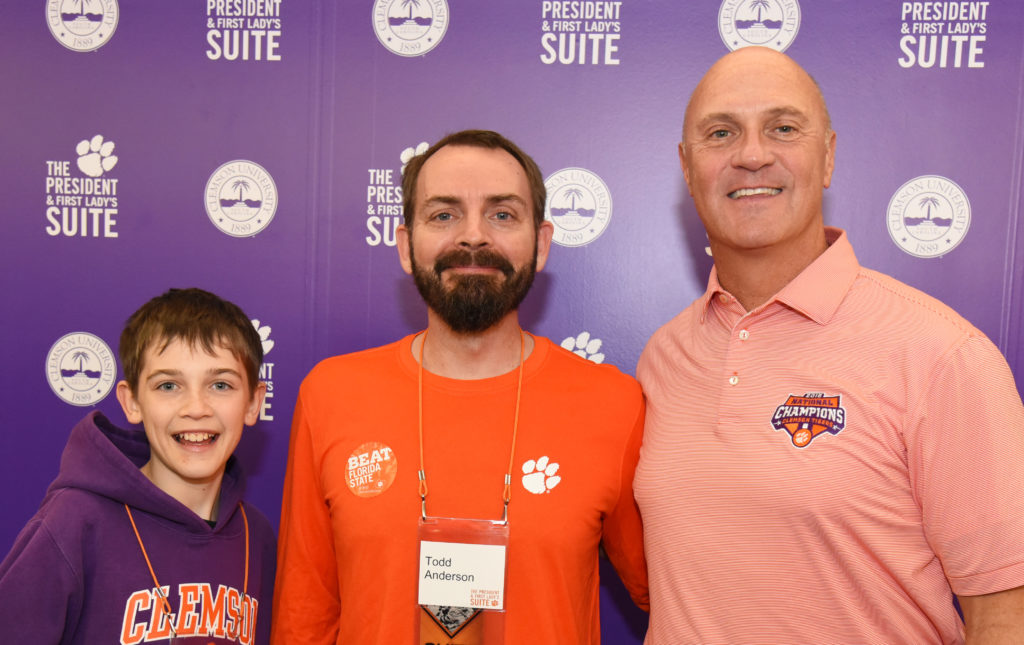By Piper Starnes, Class of ’22
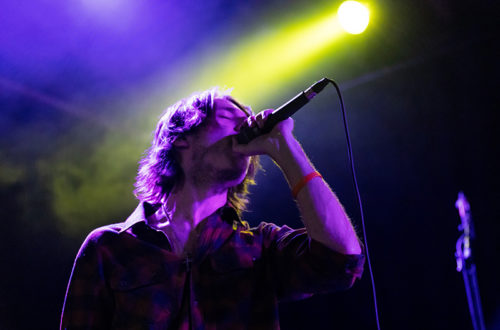
As the frontman of the Charlotte-based band American Theory, Devyn Byrd accomplishes great things on the stage and in the classroom. Byrd, a junior from Clover, South Carolina, is a performing arts major with a concentration in audio technology and minor in music. Even as a full-time student, he still managed to tour and write new songs with his bandmates.
In 2018, American Theory released its 10-track album, “Your Local Politics,” following the debut single, “Colors.” Since then, he and his bandmates (Eric Barrera, Michael Luce and Nick Saj) garnered over 51,000 streams on Spotify and nearly 22,000 views on YouTube (as of April 2020). They won “Best Rock Music Video” at the 2019 Carolina Music Video Awards and have opened for several national acts including Saving Abel, Eve to Adam and Danny Worsnop of Asking Alexandria.
“NASCAR Heat 4,” a racing video game, featured American Theory’s song “The Lion and the Liar” on the official soundtrack.
To find out more, Starnes interviewed Byrd on his backstory, music and Clemson experience.
When and how did you get into music?
Music has been a significant aspect of my life for as long as I can remember. As a child, I enjoyed singing along to songs played on the radio. I didn’t sound good, but that didn’t stop me from torturing the eardrums of my poor parents while they drove me to and from school every day. I was intrigued by singing and its many moving parts. Why does everyone’s voice sound different? How do some singers inject so much emotion into their performances? As I grew older, I became interested in baseball, school and video games. Music took a back seat and remained a hobby for most of the remainder of my childhood and teenage years.
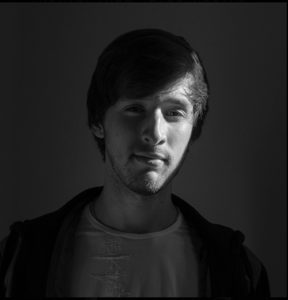
When I entered high school, I had the privilege of being a member of the Choraliers, the elite choir at Clover High School. I met many talented singers, musicians and songwriters who exhibited a passion for music I had not witnessed elsewhere. Intense preparation, a feeling of pressure from the success of previous years and an immeasurable amount of talent allowed the group to perform spectacularly. I started practicing singing regularly in an attempt to catch up to my peers and contribute to the group. I had forgotten how much I loved to sing in the car as a kid. In the process of trying to not be deadweight to the group, I rediscovered my childlike wonder for singing and became obsessed with it yet again.
I auditioned for a solo my junior year for our Christmas show. To my amazement, I was selected to sing the solo. Parents aside, I had never sung in front of people before, so you can probably imagine how scared I was when I realized I was going to sing in front of thousands of people! I miraculously made it through the performance alive, and I was shocked at how much fun I had on stage. In fact, I had never felt a sense of purpose and belonging in my life like I felt during that performance. It was then that I realized I wanted to pursue music and performance for the rest of my life. Around that time, I started recruiting musicians to start a band together. After a few lineup changes over the years, American Theory became what it is today: Eric Barrera, Devyn Byrd, Michael Luce and Nick Saj.
How did you get into songwriting?
Songwriting is a very fascinating art, and, although I enjoy singing and performing, I consider myself more of a songwriter than a singer. I’ve always been interested in the mechanics of songwriting and how melody and groove collaborate to create catchy hooks and impressive soundscapes.There is a journey of discovery and self-reflection with each marriage of lyric and melody, and I enjoy the adventure of taking simple musical ideas and fleshing them into complete songs. Sometimes you know what you want the end result to sound like, and other times you have to figure it out along the way. For this reason, it’s a tricky and mysterious art, but it can also be therapeutic and rewarding.
I’ve always dreamed of having people listen to my songs and enjoy them the way I enjoyed the songs written by my biggest inspirations, but I didn’t get serious about songwriting until high school when I took AP Literature. Before that, I was primarily a math student who dreaded reading. Once I started analyzing poetry and prose, I began to appreciate the creativity and commentary of the authors and poets we studied in class. I drew inspiration from certain works for lyrical writing, aiming to evoke emotion and create conversation using poetry and music as equally powerful tools, as opposed to using lyrics merely as a guide for vocal melodies.
Why did you choose to attend Clemson?
My brother attended Clemson, so I was already familiar with the area. I wanted to major in something related to music production, and the producer/mixing engineer of American Theory’s first album told me about Clemson’s audio technology program. That engineer is actually an alumnus of the audio technology program, Drew Cyphers, and he does fantastic work.
Do you have any favorite classes so far in the performing arts department?
My favorite classes thus far are CU Singers and the studio-based audio classes. I enjoy singing with a group of people, and I appreciate how Dr. Bernarducci teaches us about the meaning of the pieces we perform. He’s a great composer himself, and I look up to him as a songwriter. I enjoy both studio and live sound, but I feel more comfortable behind a computer working with recording and producing as opposed to mixing a live performance. Both environments are difficult and there’s always the pressure of time, but the live environment is far more stressful for me. I guess that’s a bit ironic, considering I plan on being a performer for a living.
How have your classes at Clemson helped you as an individual and as part of your band?
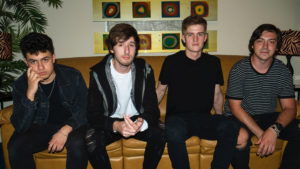
I took the music business class in Fall 2019, and it provided perspective on how the industry operates and how difficult it is to be successful. I learned about mechanical and performance royalties, sync licensing, networking and negotiation, copyright laws and the horrors of recording contracts. By incorporating this knowledge into our business operations as a band, we’ve already increased our following, our profits and our stability. Making music isn’t necessarily about those things, but they’re important for finding a way to make a living while working in the industry. Plus, my goals as a songwriter and performer are to meet people, communicate to people and form new relationships with people. If I want to accomplish those things, I have to have the resources to grow my brand and reach as big and broad of an audience as possible.
Tell us about your song “The Lion and the Liar” being on the NASCAR Heat 4 soundtrack.
American Theory has been blessed with good fortune quite a few times in its brief existence. With regard to finding success in the music industry, people often hear the phrase, “It’s all about who you know.” Although it usually isn’t that simple, it was in this case. We were lucky our album producer and mixing engineer knew someone who worked for 704Games, the developer of “NASCAR Heat 4.” The developer was looking for music to fill out the rest of the soundtrack, so we submitted “The Lion and the Liar” and they approved it. It’s a huge honor!
What’s coming up for American Theory?
Unfortunately, the pandemic has put most of our plans on hold, and most of the industry has shut down for the time being. Many artists have resorted to going live on social media and asking for donations to continue their existence, and many event planners, audio engineers, agencies and promoters are all out of work. The local entertainment industry is hurting, so I encourage everyone to support local artists by streaming their music and buying their merch[andise] if they can afford it. We recognize most industries are facing bleak outlooks at the moment, so just donate and support as you’re able. As for American Theory, we are making the most of the situation by recording and producing new music with the help of Scott Wilson, the bass guitarist for Saving Abel and former bass guitarist for Tantric. Once we make more progress, we’ll be putting out more information concerning new releases.
…
With all that comes with being a performer, Byrd remains humble. “I’m blessed to be a part of American Theory, and I take pride in our accomplishments however great or small,” he said. After graduation, he has a simple but ambitious goal: “I want to write and/or help write some of the greatest songs ever written.”
Byrd still has plenty of time to take in all that he can while at Clemson. We hope to see more of Byrd and American Theory at Clemson very soon.
Piper Starnes’ article first appeared in Expression, a print publication produced for Friends of the Brooks Center.
